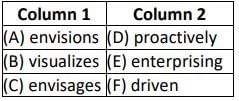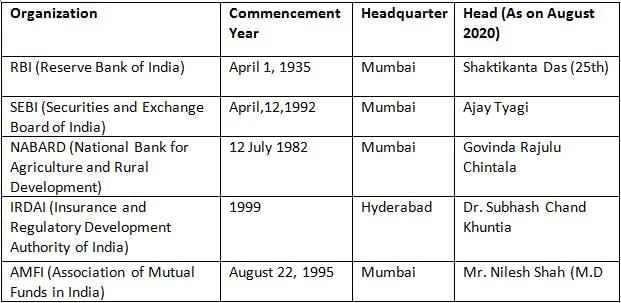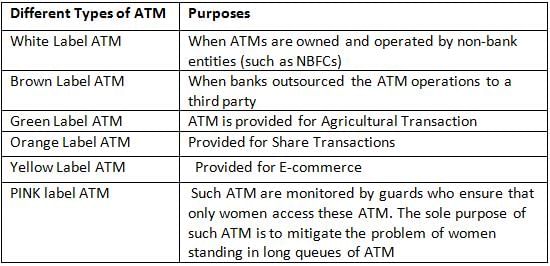SBI CBO Mock Test - 6 - Bank Exams MCQ
30 Questions MCQ Test Mock Test Series for SBI CBO Exam 2025 - SBI CBO Mock Test - 6
While many points are worth making in an evaluation of the single sixyear presidential term, one of the most telling points against the single term has not been advanced. This kind of constitutional limitation on elections is generally a product of systems with weak or non-existent political parties.
Since there is no party continuity or corporate party integrity in such systems, there is no basis for putting trust in the desire for re-election as a safeguard against mismanagement in the executive branch. Better under those conditions to operate on the basis of negative assumptions against incumbents. I do not know if the earliest proposal for a single, nonrepeatable term was made in the 1820s because that was a period of severely weak political parties. But I do feel confident that this is a major reason, if not the only reason, that such a proposal has been popular since the 1940s.
Though the association of the non-repeatable election with weak political parties is not in itself an argument against the limitation, the fallout from this association does contribute significantly to the negative argument. Single-term limitations are strongly associated with corruption. In any weak party system, including the presidential system, the onus of making deals and compromises, both shady and honourable, rests heavily upon individual candidates. Without some semblance of corporate integrity in a party, individual candidates have few opportunities to amortize their obligations across the spectrum of elective and appointive jobs and policy proposals.
The deals tend to be personalized and the payoffs come home to roost accordingly. If that situation is already endemic in conditions of weak or nonexistent parties, adding to it the limitation against re-election means that candidates and officials, already prevented from amortizing their deals across space, are also unable to amortize their obligations temporally. This makes for a highly beleaguered situation. The single six-year term for presidents is an effort to compensate for the absence of a viable party system, but it is a compensation ultimately paid for by further weakening the party system itself.
Observers, especially foreign observers, have often noted that one source of weakness in American political parties is the certainty of election every two or four years, not only because any artificial limitation on elections is a violation of democratic principles but also because when elections are set in a certain and unchangeable cycle, political parties do not have to remain alert but can disappear into inactivity until a known point prior to the next election. To rigidify matters by going beyond the determinacy of the electoral cycle to add an absolute rule of one term would hang still another millstone around the neck of already doddering political parties.
Directions: Read the above paragraph and answer the following:
Suppose that America adopted a single-term political system. Considering the foreign observers mentioned in the passage. how would they be expected to respond to such a development?
While many points are worth making in an evaluation of the single sixyear presidential term, one of the most telling points against the single term has not been advanced. This kind of constitutional limitation on elections is generally a product of systems with weak or non-existent political parties.
Since there is no party continuity or corporate party integrity in such systems, there is no basis for putting trust in the desire for re-election as a safeguard against mismanagement in the executive branch. Better under those conditions to operate on the basis of negative assumptions against incumbents. I do not know if the earliest proposal for a single, nonrepeatable term was made in the 1820s because that was a period of severely weak political parties. But I do feel confident that this is a major reason, if not the only reason, that such a proposal has been popular since the 1940s.
Though the association of the non-repeatable election with weak political parties is not in itself an argument against the limitation, the fallout from this association does contribute significantly to the negative argument. Single-term limitations are strongly associated with corruption. In any weak party system, including the presidential system, the onus of making deals and compromises, both shady and honourable, rests heavily upon individual candidates. Without some semblance of corporate integrity in a party, individual candidates have few opportunities to amortize their obligations across the spectrum of elective and appointive jobs and policy proposals.
The deals tend to be personalized and the payoffs come home to roost accordingly. If that situation is already endemic in conditions of weak or nonexistent parties, adding to it the limitation against re-election means that candidates and officials, already prevented from amortizing their deals across space, are also unable to amortize their obligations temporally. This makes for a highly beleaguered situation. The single six-year term for presidents is an effort to compensate for the absence of a viable party system, but it is a compensation ultimately paid for by further weakening the party system itself.
Observers, especially foreign observers, have often noted that one source of weakness in American political parties is the certainty of election every two or four years, not only because any artificial limitation on elections is a violation of democratic principles but also because when elections are set in a certain and unchangeable cycle, political parties do not have to remain alert but can disappear into inactivity until a known point prior to the next election. To rigidify matters by going beyond the determinacy of the electoral cycle to add an absolute rule of one term would hang still another millstone around the neck of already doddering political parties.
Directions: Read the above paragraph and answer the following:
According to the passage, which of the following is most likely to be true of a political system with weak political parties?
After the elections it was discovered that the phones had been _____________.
In each question below, there is a sentence of which some parts have been jumbled up. Rearrange these parts which are labelled P, Q, R and S to produce the correct sentence. Choose the proper sequence.
If you need help
P :promptly and politely
Q :ask for attendants
R :to help our customers
S :who have instructions
The Proper sequence should be:
Clearly, the popular response to the agitation was so _________that the government could not_________it as it had done many times in the past.
In the questions below the sentences have been given in Active/Passive voice. From the given alternatives, choose the one which best expresses the given sentence in Passive/Active voice.
Q. You can play with these kittens quite safely.
In addition to enhanced their reputations through strategic use of philanthropy, companies are sponsoring social initiatives to open new markets.
Direction: In the questions given below a sentence is given with two blanks in each. Corresponding to each question two columns are given with three words in each column. Which combination of words from the two columns will perfectly fit into the blanks to make the sentence contextually correct and meaningful?
The idea of a New India ____________ an enlightened citizenry, an India where public policy ____________ engages with an aspirational population.

One of the members / expressed doubt if / the Minister was an atheist / No error.
Direction: Each question below has one blank, which is indicating that something has been omitted. Find out which option can be used to fill up the blank in the sentence in the same sequence to make it meaningfully complete.
The agricultural power supplies were ________________ to six hours a day and largely to late nights.
Which among the following authority governs the mutual funds business in India?
What is the maximum amount that can be transferred through the Aadhaar Enabled Payment System (AEPS) per account per day?
What is the current Foreign Direct Investment (FDI) Limit of the insurance sector in India?
Which among the following is the tenure of the Treasury Bills issued by the Government of India?
When was the Corporate Debt Restructuring implemented by the RBI in India for rearrangement of a distressed company's outstanding commitments?
When was the Pension Fund Regulatory and Development Authority of India (PFRDA) established?
__________ are payment orders/instructions that are set up by Bank customers to ensure that payments are transferred regularly on a certain date and a method of debiting your Operative account to make an automatic payment of a predetermined sum at regular times.
Which of the following ATMs are owned and operated by NBFCs?
Which amongst the following denotes a type of insurance?
- Life insurance
- Health insurance
- Liability insurance
What type of insurance will apply if a family member has broken his/her leg in an accident while on vacation in Singapore?
Which of the following is incorrect in reference to World organizations with headquarter?
For successful and trustworthy data communication, the communicating parties must abide by a set of rules known as _________.
Large organisations employ a type of communication network known as ______ that spans regional, national, or international boundaries.
















